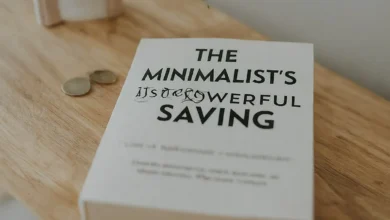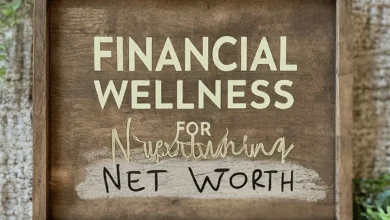Flexibility in Finances: Pilates for Your Wallet

Have you ever thought about treating your finances like a Pilates workout? Just as Pilates helps you build a strong, flexible body, financial flexibility can help you build a robust, adaptable wallet. Imagine being able to bend and stretch your budget without breaking it, or gracefully flow through unexpected financial challenges. That’s the power of financial flexibility!
In this post, we’ll explore how you can apply Pilates principles to your personal finance management, helping you create a more resilient and balanced financial life. Get ready to strengthen your financial core and stretch your dollars further!
Understanding Financial Flexibility

Financial flexibility is like having a superpower for your wallet. It’s the ability to adapt your finances to changing circumstances without breaking a sweat. Think of it as the financial equivalent of touching your toes – the more flexible you are, the easier it becomes!
In simple terms, financial flexibility means having enough wiggle room in your budget and savings to handle life’s ups and downs. It’s a crucial part of personal finance management that many people overlook. When you’re financially flexible, you’re better prepared to:
- Handle unexpected expenses
- Take advantage of sudden opportunities
- Adjust to changes in income
- Pursue long-term financial goals
Being financially flexible doesn’t mean you’re rich. It means you’re smart with your money. It’s about making your money work for you, rather than you always working for your money. This approach can lead to less stress, more peace of mind, and a healthier relationship with your finances.
Remember, just like in Pilates, becoming financially flexible takes practice and patience. But with time and effort, you’ll find yourself bending and stretching your budget like a pro!
The Pilates-Finance Connection
You might be wondering, “What does Pilates have to do with my bank account?” Well, more than you might think! Pilates and financial management share some surprising similarities. Let’s stretch our minds and explore this connection.
Pilates is all about building core strength, improving flexibility, and creating balance in your body. Similarly, good financial management focuses on strengthening your financial core, increasing your fiscal flexibility, and balancing your monetary goals.
Here are some key principles that Pilates and smart financial practices share:
- Control: In Pilates, you learn to control your movements. In finance, you learn to control your spending and saving.
- Precision: Pilates emphasizes precise movements. Financial management requires precise tracking of income and expenses.
- Concentration: Pilates demands focus. Managing your money well also requires attention and mindfulness.
- Breath: Proper breathing is crucial in Pilates. In finance, taking a moment to “breathe” before making big financial decisions is equally important.
- Flow: Pilates movements flow smoothly. Your financial plan should also flow seamlessly from one goal to the next.
Just as Pilates helps you become more in tune with your body, practicing financial flexibility helps you become more aware of your money habits. Both require discipline, patience, and consistent practice to see results.
So, the next time you’re balancing your budget, imagine you’re doing a Pilates routine for your wallet. You’re not just crunching numbers – you’re building a stronger, more flexible financial future!
Core Principles of Financial Flexibility
1. Budgeting with Breathing Room
Creating a flexible budget is like mastering the Pilates breathing technique – it gives you control and helps you adapt to changes. Here’s how to do it:
- Build in buffers: Don’t allocate every penny. Leave some wiggle room for unexpected expenses.
- Review and adjust regularly: Your budget should be a living document. Review it monthly and adjust as needed.
- Use percentage-based budgeting: Instead of fixed amounts, allocate percentages of your income to different categories. This way, your budget automatically adjusts if your income changes.
2. Strengthening Your Financial Core

A strong core is essential in Pilates, and it’s just as crucial in finance. Here’s how to build your financial core:
- Emergency fund: Aim to save 3-6 months of living expenses for unexpected situations.
- Diverse savings: Have different savings accounts for various goals (e.g., travel, home down payment).
- Multiple income streams: Consider side hustles or investments to diversify your income sources.
3. Stretching Your Dollars
In Pilates, you learn to stretch effectively. Apply this to your finances by:
- Comparison shopping: Take time to find the best deals on major purchases.
- Using cashback and rewards: Make your regular spending work for you through cashback credit cards or loyalty programs.
- Prioritizing expenses: Distinguish between needs and wants. Stretch your budget by cutting back on non-essentials when necessary.
4. Balance in Financial Decision-Making
Just as Pilates emphasizes balance in your body, your financial decisions should be balanced too. Here’s how:
- Short-term vs. long-term goals: Find a balance between enjoying life now and saving for the future.
- Risk vs. reward: When investing, balance potential gains with your risk tolerance.
- Spending vs. saving: Aim for a healthy balance between treating yourself and building your savings.
Examples of balanced financial decisions:
| Decision | Balance |
|---|---|
| Vacation | Save in advance, but also enjoy the trip without stress |
| Housing | Choose affordable rent/mortgage, but in a safe, comfortable area |
| Career | Balance job satisfaction with income potential |
5. Flowing with Financial Changes
In Pilates, you learn to flow smoothly between movements. Apply this to your finances by:
- Staying calm during financial stress: Take deep breaths and avoid panic decisions.
- Being adaptable: Be ready to adjust your financial strategy when life throws curveballs.
- Regular financial check-ins: Like a Pilates routine, schedule regular times to review and adjust your financial plan.
Exercises for Financial Flexibility
Try these practical exercises to improve your financial flexibility:
- Track your expenses for a month
- Set three specific financial goals (short-term, medium-term, long-term)
- Create a basic budget
- Start an emergency fund, even with small amounts
- Research and compare prices before making a big purchase
- Have a “no-spend” day once a week
- Learn one new financial concept each month
Tools and Resources for Enhancing Financial Flexibility
Just as Pilates enthusiasts use various equipment to enhance their practice, you can use different tools to boost your financial flexibility. Here are some recommendations:
Budgeting and Tracking Apps:
- Mint: Great for overall budget management
- YNAB (You Need A Budget): Excellent for zero-based budgeting
- Personal Capital: Ideal for investment tracking alongside budgeting
Books for Further Learning:
- “Your Money or Your Life” by Vicki Robin and Joe Dominguez
- “The Simple Path to Wealth” by JL Collins
- “The Psychology of Money” by Morgan Housel
Online Resources:
- Investopedia: For learning financial terms and concepts
- NerdWallet: Offers comparisons of financial products and services
- Khan Academy’s personal finance courses: Free, in-depth financial education
Professional Services:
- Financial advisors: For personalized financial planning
- Accountants: Especially useful for tax planning and complex financial situations
- Credit counselors: Can help if you’re struggling with debt
Remember, like finding the right Pilates instructor, it’s important to choose financial tools and professionals that fit your specific needs and goals.
Conclusion

Congratulations! You’ve just completed a financial flexibility workout for your wallet. By applying Pilates principles to your personal finance management, you’re on your way to a stronger, more adaptable financial future.
Remember, becoming financially flexible is a journey, not a destination. It requires consistent practice, patience, and a willingness to adapt. But with each small step – whether it’s creating a buffer in your budget, starting an emergency fund, or making more balanced financial decisions – you’re building a more resilient financial life.
As you move forward, keep stretching those financial muscles. Stay curious, keep learning, and don’t be afraid to adjust your strategy as your life changes. With time, you’ll find that your finances become as flexible and strong as a seasoned Pilates practitioner.
So, are you ready to start your financial Pilates journey? Your wallet will thank you for the workout!



